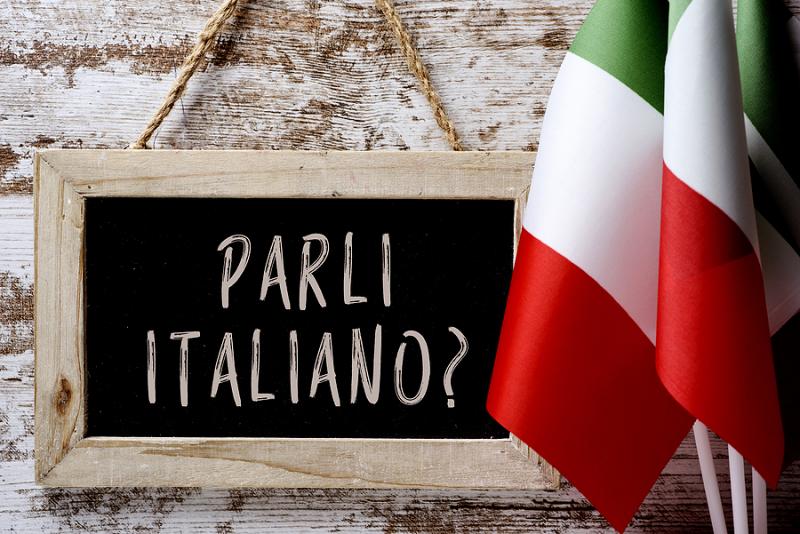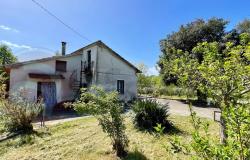Despite how popular Italian food has become worldwide, it’s surprising to see that there are still plenty of words that are routinely mispronounced. I frown every time I hear somebody ordering “taGHliatellI” rather than “taGLiatellE”. This shows that not only is the letter “c” a problem, but the pronunciation of the letter “g” can also be tricky for non-Italian speakers.
As in the case of the letter “c”, there are also some very basic rules for pronouncing the “g” correctly. But before going into the “g”, let’s brush up on the general guidelines for the “c”.
When the Italian “c” is followed by “i” or “e”, it is pronounced with a soft “ch” sound, like in “ciao”. But when the letter “c” is followed by an “h”, it makes a hard “k” sound, like in “macchiato” [makiato]. When the “c” is followed by an “a”, “o”, or “u”, it sounds hard, like in can, color, or cute.
-Ciao! Mi fa un caffè macchiato, per favore? (Hello! May I have a caffè macchiato, please?)
Now let’s deal with the “g” so you won’t run the risk of mispronouncing “Lamborghini” and “tagliatelle” ever again! Like the “c”, the letter “g” can sound both “soft” and “hard”, depending on the letters that follow it.
How to Pronounce G Followed by A, O, U in Italian
To recap, remember that the letters a, o, and u after “g” make it sound “hard”.
The rule is: g + a/o/u = ga, go, gu (like in gate, go, gum)
Here are some examples:
- gatto [ga-toh] – cat
- Superga [su-per-gah] – a church near Turin, also known as Basilica of Superga, a royal crypt on Turin’s hillside
- gomma [go-mah] – rubber, gum, eraser, also tire
- gonna [go-nah] – skirt
- gorgonzola [gor-gon-zo-lah] – a traditional Italian blue cheese
- gusto [goos-toh] – taste
- guardare [goo-ar-da-reh] – to look, to watch
How to Pronounce G Followed by E or I in Italian
“G” followed by “e” and “i” makes the pronunciation “soft”.
The rule is: g + e/i = je/jee (like in jeans, Jeep)
Examples:
- gelato [je-la-toh] – the famous Italian ice cream.
- Germania [Jer-mah-nia] – Germany
- Genova [Je-no-vah] (stress on the first syllable) – a city on the Ligurian Riviera, historically one of the most important ports in Mediterranean sea
- giraffa [jee-ra-fah] – giraffe
- giacca [jee-a-ka] – jacket
- ginocchio [jee-no-kee-oh] – knee
Take care to always pronounce the soft sound of “g” well in order not to mix up “cugina” (cousin) with “cucina” (kitchen). The first one is pronounced like in “gym” while the second one sounds like “chest”.
How to Pronounce GH in Italian
Now, do you remember that an “h” placed after a “c” makes the “c” sound “hard”? The same rule applies to “g”.
The rule is: g + h = g (like in “spaghetti”)
Examples:
- spaghetti [spa-ge-tee]* – the staple of Italian cuisine and plural for “spaghetto”, which means “thin string”
- ghiaccio [Gee-a-chee-oh]* – ice
- ghepardo [ge-par-doh]* – cheetah
- cinghiale [cheen-gee-a-leh]* – wild boar
- funghi [fun-geeh]* – mushrooms
- righello [ree-ge-loh]* – ruler
* pronounce “ghi”/“ghe” like in “get”.
How to Pronounce G followed by L or R in Italian
When “g” is followed by “r”, it sounds “hard”.
The rule is: G + r + a/o/u/e/i = g
Examples:
- Grecia [gre-chee-ah] – Greece
- segreto [se-gre-toh] – secret
- grosso [gro-soh] – big, large
- grotta [gro-tah] – cave
- grigio [gree-joh] – grey
- gruppo [gru-poh] – group
- grasso [gra-soh] – fat
The same applies to the combination “g + l”, though there is an exception to the rule.
The rule is: g + l + a/o/u/e = “hard” g
- inglese [een-gle-seh] – English
- glaciale [gla-chee-a-leh] – glacial (Era glaciale – Ice Age)
- gladiatore [gla-dee-a-to-reh] – gladiator
- globale [glo-ba-leh] – global
- glossario [glo-sa-ree-oh] – glossary
- glutine [glu-tee-neh] – gluten
Most of the words with “gl” + “i” have a soft “g”. So soft, in fact, that you hardly pronounce it. Instead, you pronounce it as an “l” followed by a kind of short “y” sound (as in yoghurt or yacht).
For example:
- aglio [al-yoh] – garlic
- figlia [feel-yah] – daughter
- migliorare [mee-lyo-ra-reh] – to improve
- coniglio [ko-nee-glyoh] – rabbit
- artiglio [ar-tee-glyoh] – claw
- togliere [to-lye-reh] (stress on the first syllable) – to remove, to take away
- tagliare [ta-lya-reh] (stress on the second syllable) – to cut
- tagliatelle [ta-lya-te-leh] – a type of pasta that resembles long flat ribbons, made with eggs
- paglia e fieno [pa-lya eh fee-en-noh] – literally “straw and hay”, yellow and green tagliatelle
There are, however, some words where “g” in “gli” sounds hard, as for example in:
- glicerina [glee-che-ree-nah] – glycerine
- negligente [ne-glee-jen-teh] – negligent, careless
- glicemia [glee-che-mee-ah] – glycemia
How to Pronounce G followed by N in Italian
Let’s get to the last rule now! Once you’ve dealt with the correct pronunciation of “g + l + i”, “g + n” should be a breeze!
The letters g + n + a/e/i/o/u combinations always make the “g” sound soft. Just like in the previous rule for “gl” + “i”, you do not pronounce the “g” but instead, add the short “y” after “n” (as in yard or year).
For example:
- lasagna [la-sa-nya] – another pillar of Italian cuisine in the world
- sognare [so-nya-reh] – to dream
- ognuno [o-nyu-noh] – everyone
- cognome [Ko-nyo-meh] – last name
- ingegnere [Een-ge-nye-reh] – engineer
- prugna [pru-nya] – plum
- agnello [a-nye-loh] – lamb
Now, to conclude, let’s try to read the dialogue below, which can be useful to memorize the rules:
- Buongiorno, Gabriella! (Good morning, Gabriella!)
- Buongiorno, Giorgia! (Morning, Giorgia!)
- Come va la giornata? (How’s your day?)
- Va bene. Sto facendo una passeggiata. E tu dove vai? (Pretty good. I’m taking a walk. And where are you going?)
- Vado dal parrucchiere. (I’m going to my hairdresser)
- Vuoi tagliare i capelli? (Do you want to get a haircut?)
- No, devo solo fare la piega. (No, just to get a blowout.)
- Allora ti dovresti sbrigare, perché nel pomeriggio è prevista pioggia. (You should hurry up then, because rain is forecast for this afternoon).
- Mannaggia! Ogni volta che vado dal parrucchiere piove… Corro! Buon sabato e salutami Giuseppe! (Damn! It rains every time I go to my hairdresser! I have to go! Have a good Saturday and say hello to Giuseppe!)
- Va bene! Salutami la famiglia! (Sure! Give my regards to your family!)
Now that you have learned some basic rules of Italian pronunciation, we can build on these with different topics that could be useful for you while visiting Italy. Stay tuned and come back to us next week!
This article was originally written for Italy Magazine by Francesca Re Manning on 09/18/2013. It has been updated and expanded.




















